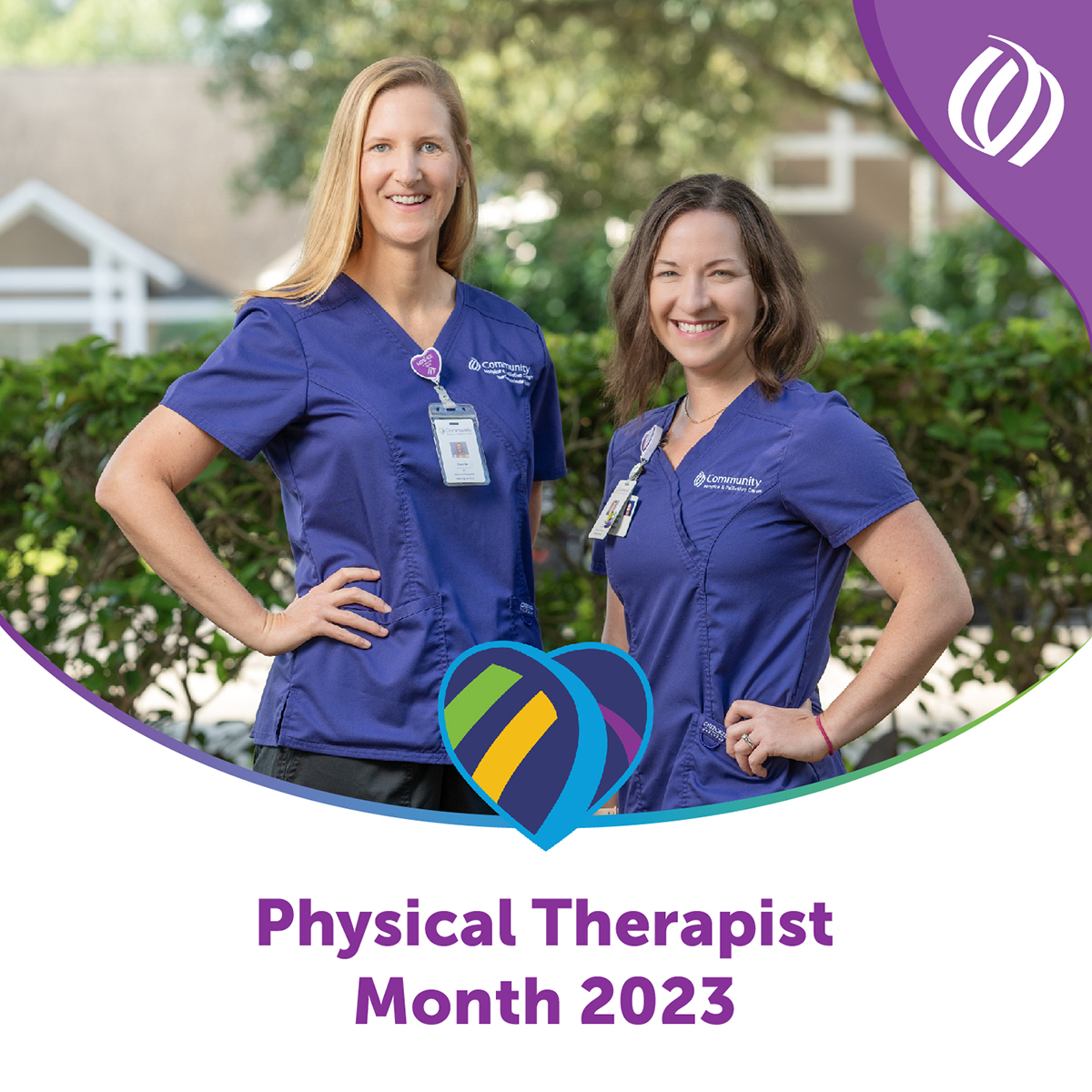For Physical Therapy Month, we asked Ali Thompson and Laurie Guenther-Burris, Physical Therapists at Community Hospice & Palliative Care to explain how their roles help patients and their families find comfort and relief at the end of life.
Here's what they had to say:
What does a hospice physical therapist do?
Laurie:
A Hospice physical therapist is available to consult with patients and families for any therapy needs, including training family and caregivers on transfers or home exercise programs. We can also assess safety and provide recommendations for equipment or mobility limitations.
Ali:
Physical therapists working in a hospice setting recieve consultations for various reasons. One of our most important roles is to educate and train patients and their families/caregivers with mobility tasks in their every day life. This includes teaching patients how to get in and out of hospital beds, how to operate medical equipment, or reduce risk of falls in their home. We also help patients maintain their current level of strength by recommending home excersie programs.
Why does a patient at the end of life need physical therapy?
Laurie:
Through physical therapy, we aim to improve the quality of life of our hospice patients, and to assist with maintaining their ability to transfer or to keep them safe.
Ali:
Physical therapy can help patients maintain their independence for as long as safely possible while also improving their quality of life.
Do you provide individualized care for each patient?
Laurie:
Yes, the care is individualized – whether the patient is in their home, an assisted living facility, long-term care facility, or in one of our general inpatient centers.
How often do you visit a patient?
Laurie:
Typically, we visit a patient once per consultation/assessment visit. There might be instances were we may return for a follow-up visit to answer any further questions. There might be instances were we need to upgrade an exercise program or check safety.
Ali:
The frequency of visits depends on the care needs and goals of the patient. Often, we consult with the patient once, but if we identify additional needs or goals, we collaborate with the core team to determine an appropriate frequency.
How do you work with the patient and their family to provide individualized care?
Laurie:
We ask patients about what they want to learn from their physical therapy visit. Their goals and our assessment findings help guide our visit toward their care goals.
What is your favorite thing about being a hospice physical therapist
Laurie:
Being able to assist with providing care toward the end of a person’s life.
Ali:
Helping patients achieve their goal at such a vulnerable time in life is very rewarding.
Why do you enjoy working at Community Hospice
Laurie:
I enjoy working at Community Hospice because my fellow co-workers are caring individuals. I enjoy assisting patients and families in their time of need.
What is your goal after working with a hospice patient?
Laurie:
My goal is for them to have a better understanding of how to transfer or maintain strength or keep the patient safe.
Ali:
My goal is for the patient and their families to feel supported so that they may fulfill as many goals as possible at the end of their life.
Thank you, Laurie and Ali for helping patients achieve their care goals and maintain their mobility at the end of life.

